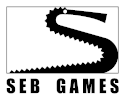I decided to start this series to give you all an inside look about what is going on, general thoughts behind the decisions I made during the designing and “production” process.
It is a bit old news, but here is a quick recap. Our friends from EOE Orbis (Black Tree Miniatures) successfully run a KS campaign to fund a beautiful line of miniatures inspired by the classic novel by Robert Louis Stevenson – Treasure Island. And as a part of their Kickstarter, I have a pleasure to do a small set of rules to go along those beautiful models.
The Core Concept
Today I will share with you some fundamental concepts behind the Buccaneers & Scoundrels. Like many projects, this one started some time ago with the classic “just another idea for a game”. The idea was put aside for various reasons, but then the KS campaign come, and I had this voice in my head “You know what would be cool? The Pirate Game!”. A quick chat with John form EOE, and I was on board sailing towards adventure!
When I started playing with the concept, I got a few ideas in my head how the games should work and what I would like to achieve it. The game should be:
- Simple and dynamic
- Campaign orientated
- Requires a low number of miniatures
So let’s take a closer look at how those points are implemented in the game.
Fast and simple? I hope so
I think everyone like when the game is dynamic and doesn’t bog down. So how to make games fast and dynamic? For me, the best way to do this is to use alternative or random activation. Traditional “I-Go, You-go” game mechanic doesn’t fit small skirmish games, at least that just my opinion.
I decided to use a random activation mechanic. During each turn, players draw tokens to activate their models, and each model has his unique token. To balance “randomness” of this, players are allowed to keep one token on hand for every three models they have in their crew. When activated, the model can usually perform one action.
I also decide to use a pretty small table, 60cm x 60cm.
Now let’s talk about the main characters of the game – Miniatures. As I wrote above, I decided to go for a small number of miniatures per side, after all, this is a skirmish game right. Typical “crew” will consist of 4-7 miniatures. Each miniature has only two core statistics that characterise them: Body and Mind. First shows physical capabilities like strength or dexterity, when later reflects mental abilities like morale or will
Remember when I mention something about a campaign? Here is where Skill comes into the play as each skill can be rise when the model gains enough experience allowing players to build their “crew”. This element adds a narrative to the game and helps to create unique characters.
Ow, and each “crew” has its Heroic Points that can be spent on additional actions, Fumbles system when you roll unlucky 1, weapons and… and a few other details but that will be cover in next article.
So hopefully this gives you some insight into what this game is
See you next time!
Cheers,
Seb
